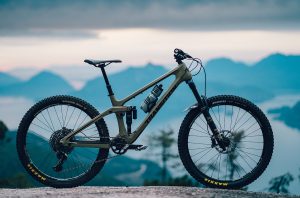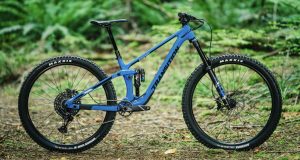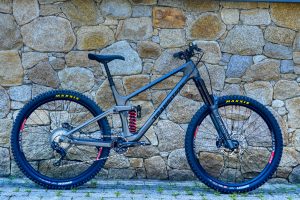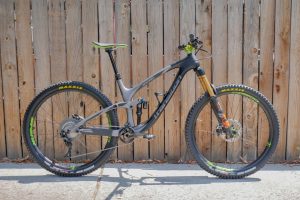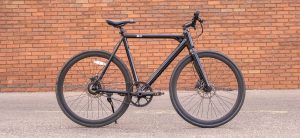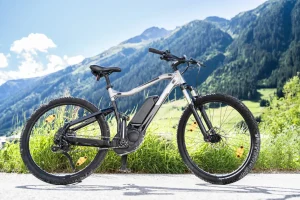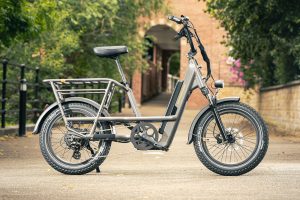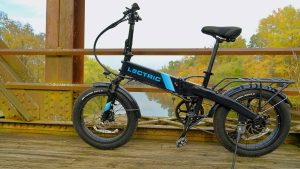Transition Sentinel vs. Ibis Ripmo, When it comes to mountain biking, having the right bike can make all the difference in your riding experience. Two popular choices among riders are the Transition Sentinel and the Ibis Ripmo. These bikes are known for their exceptional performance, durability, and versatility. In this head-to-head battle, we will compare and contrast the Transition Sentinel and the Ibis Ripmo to help you make an informed decision about which one is the best fit for your mountain biking adventures.
Key Features of the Transition Sentinel

The Transition Sentinel is a top-notch mountain bike designed to handle a variety of terrains and riding styles. Let’s take a closer look at its key features:
- Frame: The Transition Sentinel features a sturdy and lightweight carbon frame, known for its durability and responsiveness on the trails.
- Suspension: Equipped with a RockShox Lyrik Ultimate fork and a Super Deluxe Ultimate rear shock, the Sentinel offers a plush and controlled suspension that can handle rough trails and big hits with ease.
- Drivetrain: The bike comes with a reliable and smooth-shifting SRAM Eagle GX drivetrain, ensuring efficient power transfer and easy gear changes.
- Wheels: With its 29-inch wheels, the Sentinel rolls over obstacles effortlessly, providing stability and traction on technical sections.
- Geometry: The bike’s modern geometry, including a slack head angle and a long reach, contributes to its stability at high speeds and confidence-inspiring handling.
Key Features of the Ibis Ripmo

The Ibis Ripmo is another exceptional enduro bikes that has gained a loyal following among riders. Let’s explore its key features:
- Frame: The Ibis Ripmo boasts a strong and lightweight carbon frame, known for its exceptional strength-to-weight ratio and durability.
- Suspension: With a Fox Float Factory 36 fork and a DPX2 rear shock, the Ripmo delivers a responsive and smooth suspension performance that soaks up bumps and enhances traction.
- Drivetrain: The bike is equipped with a Shimano XT 12-speed drivetrain, offering a wide gear range and precise shifting for tackling steep climbs and fast descents.
- Wheels: The Ripmo rolls on 29-inch wheels, providing excellent rollover capability and maintaining momentum on challenging trails.
- Geometry: The Ripmo’s modern geometry, featuring a slack head angle and a longer reach, delivers stability and control, making it a joy to ride on technical descents.
Transition Sentinel vs. Ibis Ripmo
Both the Transition Sentinel and the Ibis Ripmo are exceptional mountain bikes with impressive features and performance. However, there are some key differences that set them apart. Let’s compare them head-to-head:
- Frame: The carbon frames of both bikes offer strength and lightweight characteristics. However, the Transition Sentinel is known for its slightly burlier build, making it a preferred choice for riders who prioritize durability and aggressive riding.
- Suspension: While both bikes have excellent suspension systems, the Transition Sentinel’s RockShox Lyrik Ultimate fork and Super Deluxe Ultimate rear shock provide a plusher and more controlled ride, particularly on rough and technical trails.
- Drivetrain: The SRAM Eagle GX drivetrain on the Transition Sentinel offers precise and reliable shifting, while the Shimano XT 12-speed drivetrain on the Ibis Ripmo delivers a wide gear range and smooth performance. The choice here comes down to personal preference and familiarity with the drivetrain systems.
- Wheels: With their 29-inch wheels, both bikes excel in rollover capability and maintaining momentum. However, some riders find that the Transition Sentinel’s slightly wider rims provide better tire support and traction in loose conditions.
- Geometry: The geometry of the Transition Sentinel and the Ibis Ripmo is modern and performance-oriented. The Transition Sentinel leans towards a more aggressive and stable riding position, ideal for fast descents and technical terrain. The Ibis Ripmo offers a balanced geometry that excels in both climbing and descending, making it a versatile choice.
- Performance: The Transition Sentinel and the Ibis Ripmo both offer excellent performance on a wide range of terrain. They are both capable of handling steep climbs and technical descents. However, they each excel in different areas. The Sentinel is a slightly more nimble bike on climbs. It is also a bit more playful in the air. The Ripmo, on the other hand, is a more stable bike at high speeds and on technical terrain. It also has a bit more travel, which can be helpful for tackling big hits.
- Verdict: So, which bike is the better choice? It depends on your riding style and preferences. If you are looking for a nimble bike that is good on climbs and playful in the air, then the Transition Sentinel is a great choice. If you are looking for a stable bike that is good at high speeds and on technical terrain, then the Ibis Ripmo is a great choice.
- Price Ranges: The Transition Sentinel and the Ibis Ripmo are two of the most popular enduro bikes on the market, and their prices reflect their popularity. The Sentinel starts at $5,499, while the Ripmo starts at $5,899. However, the Sentinel is available in a wider range of build kits, with prices ranging up to $10,499. The Ripmo, on the other hand, is only available in four build kits, with prices ranging up to $9,999.

Here is a table that summarizes the price differences between the two bikes:
| Build Kit | Transition Sentinel | Ibis Ripmo |
|---|---|---|
| Base | $5,499 | $5,899 |
| Comp | $6,499 | $7,499 |
| GX | $7,999 | $8,999 |
| X01 | $9,999 | $10,499 |
| XX1 | $10,999 | N/A |
FAQs
Q: Which bike is better for downhill riding?
A: Both the Transition Sentinel and the Ibis Ripmo are capable downhill machines, but the Transition Sentinel’s burlier frame and plush suspension make it a popular choice among riders seeking an aggressive downhill experience.
Q: Can the Ibis Ripmo handle technical climbs?
A: Yes, the Ibis Ripmo’s balanced geometry and efficient drivetrain make it well-suited for technical climbs. It offers a good balance between climbing prowess and descending capability.
Q: Are the Transition Sentinel and the Ibis Ripmo suitable for bikepacking?
A: Both bikes can be adapted for bikepacking adventures. However, the Transition Sentinel’s slightly larger frame and more robust build make it better equipped to handle the demands of carrying gear for extended trips.
Q: Which bike is more suitable for cross-country riding?
A: While both bikes are more oriented towards aggressive trail riding, the Ibis Ripmo’s balanced geometry and efficient pedaling make it a viable option for cross-country riding as well.
Q: Can the Transition Sentinel and the Ibis Ripmo handle jumps and drops?
A: Absolutely! Both bikes are designed to handle jumps and drops with ease. Their modern geometry and capable suspension systems allow riders to tackle technical features confidently.
Q: Which bike offers better value for the money?
A: The value for money depends on personal preferences and priorities. Both the Transition Sentinel and the Ibis Ripmo offer excellent performance, and choosing between them ultimately comes down to individual rider preferences and intended riding style.
Conclusion
In the head-to-head battle between the Transition Sentinel and the Ibis Ripmo, it’s clear that both bikes have their strengths and are capable performers on the trails. The Transition Sentinel excels in aggressive downhill riding and rough terrain, thanks to its burlier frame and plush suspension. On the other hand, the Ibis Ripmo offers a balanced geometry that performs well in various riding situations, making it a versatile choice.
Ultimately, the choice between the Transition Sentinel and the Ibis Ripmo depends on your personal preferences, riding style, and the type of trails you frequent. We recommend test riding both bikes if possible and considering factors such as geometry, suspension performance, and drivetrain preference before making your decision. Happy riding!

